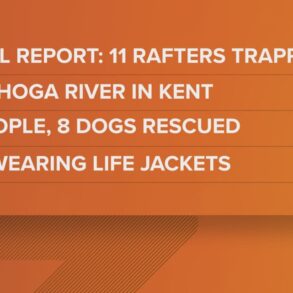Pet owners wishing to travel to the US with their furry friends may be subject to new rules from this Thursday.
The additional requirements, which will mostly impact dog owners, have been issued to prevent the spread of dog rabies which was eliminated in the US in 2007, according to the Centers for Disease Control and Prevention.
From August 1, dog owners must complete a new form and all canines entering the US will need to be over six months old; have a microchip; and appear healthy when they arrive at the airport.
Pet owners may face additional requirements if their animals come from one of 100 countries that the public health agency considers to be high risk for rabies. Added precautions might include the dog passing a blood test or being forced to quarantine for 28 days in a registered CDC center.
Dog owners will be forced to pay for the provisions, according to the agency’s website.
For owners with dogs that have traveled through a high risk country, coming back to the US might prove to be more complicated if the dog was vaccinated outside of the US.
The animal would need to enter the US at one of six ports where the CDC has an animal care facility – John F Kennedy International Airport in New York City; Los Angeles International Airport; Hartsfield-Jackson Atlanta International Airport; Miami International Airport; Washington Dulles International Airport or Philadelphia International Airport.
The ports take in all types of species including horses and zoo animals.
If the animal is not vaccinated against rabies and has been in a high-risk country for rabies within the past six months, it will not be allowed to enter the US, the CDC warned.
The precautions stem from the pandemic when the federal government stopped allowing people to bring in dogs from high-risk countries for rabies.
“The regulations also more closely aligns with the World Organisation for Animal Health’s standards for the international movement of dogs from countries with a high risk of dog rabies,” the CDC stated.
“Furthermore, it addresses recent challenges seen with international dog importations, such as fraudulent documentation and dogs housed in unsafe conditions if they didn’t meet requirements for entry to the United States.”
This post was originally published on this site be sure to check out more of their content.












































